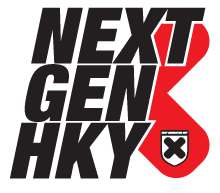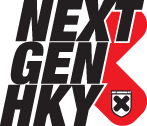On Ice Development
Since 2002, we have been delivering programming across North America and Europe. Over the past eight years, our focus has been working year-round primarily in the Ottawa region.
Collectively, we have taught 70+ years, in 9 different countries, with an estimated 75,000 youth and adults. In this past year alone, we trained over 6,500 players — with skill sets ranging from beginner to professional. This vast experience, along with working with the #1 hockey school in the US, top European skating coaches, and other noted programs has enabled us to deliver what we feel to be the path to each player’s individual and team success into the next generation!
Our current and progressive approach to on ice player development has led to following two very detailed programs that can either operate independently or are blended for all around player growth. The SKATING EFFICIENCY and PUCK CONFIDENCE programs have multiple times over proven to help all of our athletes work towards reaching their goals.
- SKATING EFFICIENCY PROGRAM
-
Skating Efficiency Program
All aspects of a players skating ability revolve around their overall balance and body control. Often the focus for skating is simply on the player’s legs and knee bend only. This focus is flawed, considering much of our ability to be balanced relies on our upper body and arm movement we must first look to create a sound, efficient upper body to create balance—which will also translate into lower body efficiency. You can visualize the difference by thinking of running a sprint with your arms tied to your sides versus the natural, free-flowing, motion.
This philosophy of educating players on perfecting all elements on a player’s body/stride has been a catalyst for player development. Our bodies work in series for all elements of our lives. In terms of skating each joint, muscle and body system needs to cooperate to generate the efficiency hockey now requires in todays game.
Four key elements to a players skating ability are:
Stance—establishing a solid foundation to build upon is fundamental to developing a players overall skating ability. By establishing a solid stance we are able to form a base to build upon add add complimentary elements.
Body Control—as previously mentioned body control is a vital element in developing players skating abilities. By perfecting body positioning within stride and agility based techniques we are able to create a more balance and complete player
Power Output/Foot speed—once base and balance have been founded power output and foot speed can be improved upon. A solid base and sound body control provide a platform to ensure that power is being used in as efficient of a manner as possible—equating to more speed for the player.
Stride—efficiency is key for a players stride not only from an energy perspective but also from a speed perspective. By ensuring all elements of a players stride are in tact we are able to create a faster more agile player
These principals are not only for straightforward acceleration but apply directly to all elements of skating. Forwards, backwards, lateral, explosive starts, crossovers/unders, and transitions. Proper arm, shoulder, torso, head and even stick positioning allows us to progress quickly into advanced skating elements where we can then refine the lower body movement quickly with the upper body working in series with the lower body or engine that drives each player.
- PUCK CONFIDENCE PROGRAM
-
Puck Confidence Program
Most of a player’s ability level with having a puck on their stick is derived from that player’s confidence.
In considering what elements actually make up this confidence we have developed framework to build confidence in all aspects of puck control, passing and shooting. We have broken this down into 5 areas which all have real game applications at their foundation.
5 focus Areas:
Movement with the Puck – How many times in a game do you as a parent/coach either verbally say or internally think…”MOVE YOUR FEET” when a player gets the puck on their stick?
During the course of a game being able to automatically receive the puck and get your feet moving has several benefits. Foot movement makes a player harder to check, opens up passing/shooting options and helps positional draw your opponents out of their system.
Small Areas – Lets face it the rink isn’t getting any bigger in North America but the game is getting faster. If you were to look up puck possession statistics and compare those to winning percentage statistics you should not be surprised to find out there is a pretty clear correlation.
Winning the small area battles and scrums doesn’t only benefit a team in the offensive zone but negates opponent’s opportunities in the defensive zone as well. Being able to think fast, protect the puck, make simple plays to safe areas and be aware of your teammates support is easy in theory. With the addition of the opposing team putting pressure on the puck means being able to make good decisions in small areas is a skill only learned through proper controlled repetition and coaching.
Shot Choice/Release – First picture yourself with the golden net front opportunity to score. When you look at the net to take your shot did you see the goalie or the net that was open around the goalie? Our vision drives us to focus on what is closest to us (the goalie) and blurs the background (net) unless we are trained or consciously do the opposite.
Now that you can see the mesh around the goalie and pick you spot to shoot you are ready…. or are you? BE THE PUCK….. what your eyes see and what the puck sees certainly will be different. Truth be told, you have to now use a bit of your imagination to try and be the eyes for the puck and understand what mesh that puck sees in the net.
Simply getting the puck on the net in many cases helps to create opportunities to score but also for rebounds around the net. With an understanding of the above concepts, the ability to quickly get shots to the net and using proper release can quickly aid in goal production.
Tape to Tape – Not very often in a game to you stand face to face with a teammate and pass forehand to forehand. The basics of passing have their introductory benefits however we will be using every opportunity to make puck movement as game like as possible.
Putting a game type visual on all elements will help players visualize its application and recognize its use when actually in a game.
Cause and Effect – Using all the above Knowledge we can then grow each players game awareness and help them understand where openings often are on ice as well as how they can create openings.
Whether this be staying on the defensive side of puck to make yourself a pass option in your defensive zone, battling in any area on the ice or pushing off net front to the slot to get open for a catch and release pass.
If you want opportunities to skate with the puck, make plays, win battles or score a goal you must understand how to get that puck on your stick as well and have the confidence once you do get the puck.
We are uniquely equipped to deliver focused development for any and all aspects of the game of hockey. We are experienced championship team coaches, respected development coaches and most importantly we are focused on helping each athlete reach their goals.
For more information on our existing programs or how to arrange for Next Generation HKY to come to your community, please contact us at info@nextgeneration-hky.com.











